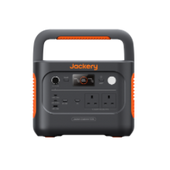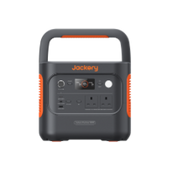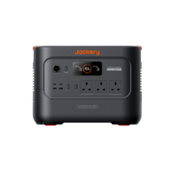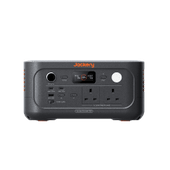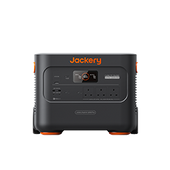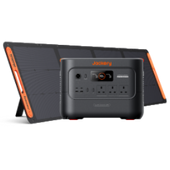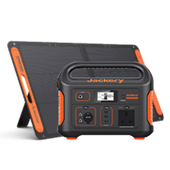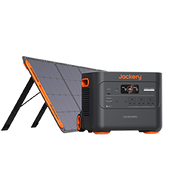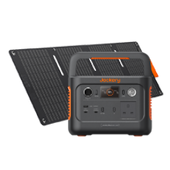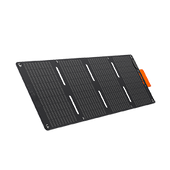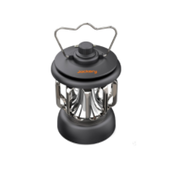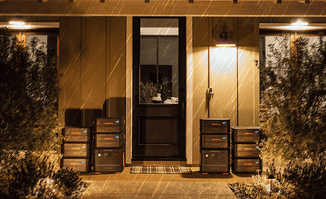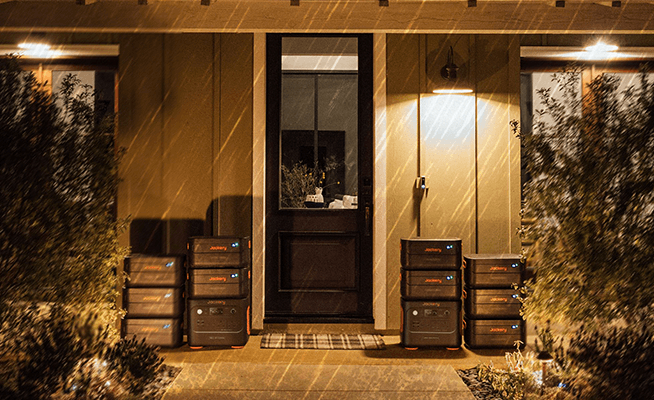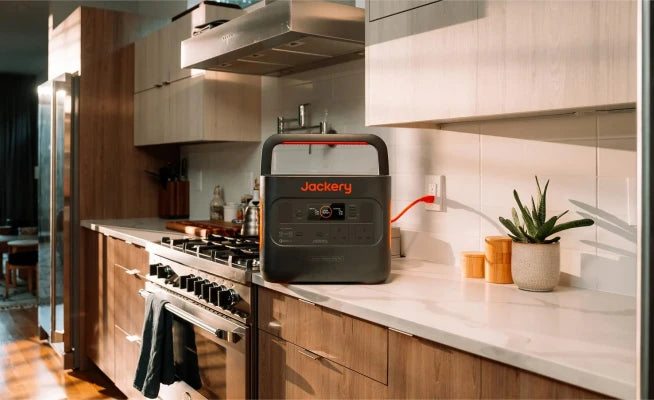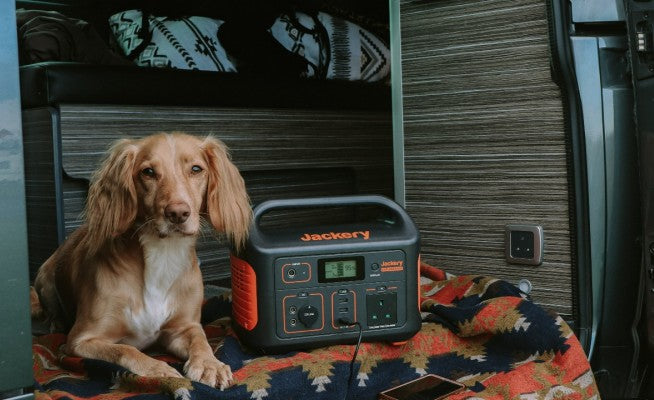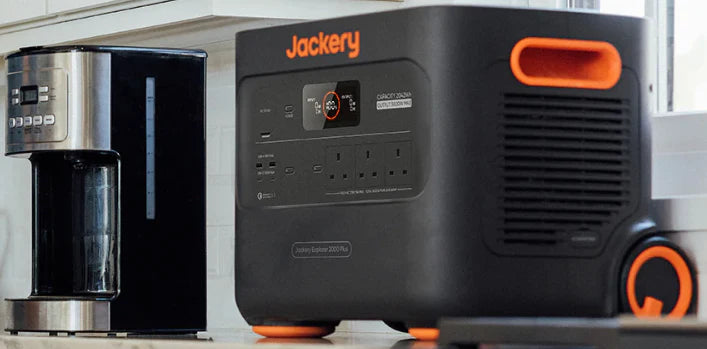Ofgem's latest cap sets a typical dual-fuel bill at £1,720 for July-September 2025, a 7% decrease from the April-June level of £1,849. That still sits £152, or 10%, above the same quarter last year. Only in April, the regulator had to raise the ceiling by 6.4% after wholesale costs spiked, showing how fast fortunes reverse. Commons research says July lowers unit gas prices 9.4% and electricity 4.8%, but labels the wider market volatile. Cornwall Insight now predicts just a 1% fall in October, yet warns the outlook flips with every geopolitical jolt. Ofgem boss Jonathan Brearley keeps reminding households that unpredictability is the new normal.[1][2][3]
Standing charges averaging £334 a year compound the pain and hit frugal users hardest, prompting calls for reform. With the summer dip looking more like a pause than a trend, everyday energy saving offers a personal hedge against the next hike. Smarter energy management, such as using a portable power station to store cheaper off-peak electricity for peak-time use, trims the slice of the bill that the cap can't control and frees cash in a tight economy. It also builds a buffer for winter when demand rises and past January surges still haunt memories. Hence, proactive energy saving is the simplest way to steady your finances, and a jittery market plays on.
Quick Energy Saving Tips (Low-Cost & Behavioural Changes)
1. Master Your Heat & Water
Make heating tweaks first for guaranteed energy saving. That's because room and water heat use more than half of what you spend on energy each year. Keep the room thermostat between 18°C and 21°C. Nudging it down by one degree can decrease £90 from the annual bill. Lower your combi-boiler's flow to 60°C. Nesta tests show a 4% efficiency lift and gas-bill cuts of 9%. Use a programmer so the boiler only runs when you need it, and combine it with TRVs. That combo can lop £110 a year off bills, and controlled trials found heating-energy cuts of 18%. Trade an 11-minute shower for a five-minute one to save 78 litres of hot water and diminish its carbon impact by 60%. Stack such low-cost tweaks, and, consequently, you will feel warmer for less.[4][5][6]
2. Smart Appliance & Kitchen Strategy
On the appliance front, another easy energy saving is to wash clothes at 30°C; Energy Saving Trust figures suggest the switch can save about £24 a year and around 40% of the electricity used for a typical wash. Peg the outdoor line instead of the tumble dryer. Each full vented-dryer cycle burns 5.3 kWh and might cost £1.31. In the kitchen, boil only the water you need and keep lids on pans. The kettle trick is worth £10 a year, and, similarly, a snug lid can cut household energy by up to a quarter. Batch-cook when you can, reheat in the microwave instead of the oven, and pay attention to the new A-to-G energy-efficiency label. Since March 2021, the confusing A+++ grades have gone, rendering it clearer which kit categorically sips power. Choosing an A- or B-rated appliance pays you back over its lifetime through lower running costs.[7][8]
3. Slay "Vampire Energy"
Standby—"vampire" or "phantom" power—is the trickle of electricity devices draw while "off" yet still plugged in, waiting for a remote signal or keeping a clock alive. Set-top boxes, consoles, and chargers are suspects, and the drain adds up: British Gas reckons the average home wastes £147 a year this way. The cure is pure energy saving—switch gadgets off at the wall or plug clusters into one power strip with a single physical switch so you can kill the lot with a click. Make it part of your end-of-day routine, and your smart meter will show the drop within a week.[9]

Fortify Your Home (The "Fabric First" Approach)
1. Insulate Before You Generate
Sticking to the fabric-first playbook means upgrading the roof, walls, and drafts before thinking about renewables. Research for the government's "Retrofit for the Future" program found that project teams always tackled heat-retention and airtightness first. Meanwhile, local authorities echo the point and note that a fabric-first upgrade makes homes warmer in winter, cooler in summer, and cheaper to run. In plain terms, insulation is a permanent fix. Panels and heat pumps work better afterwards because the house needs less energy to stay comfy. That is why building-code consultations now propose fabric-specific metrics to drive deeper efficiency before any low-carbon kit is fitted. Think of it as putting on a thick coat before buying a heater, and it is common-sense, low-risk, high-impact, and a solid route to long-term energy saving gains.
2. Seal the Big Heat-Loss Spots
An uninsulated UK roof leaks about a quarter of a home's heat, and, hence, topping up loft insulation is commonly the cheapest high-impact fix.[4] Next come the walls: approximately a third of all heat in an uninsulated house escapes through them. Where you have a conventional cavity, technicians can inject mineral wool or beads; for solid walls, external or internal boards do the same job. Draughts are smaller gaps but create big discomfort. Blocking spare cracks around floors, doors, and pipes stops cold air from sneaking in and lets the boiler cycle less frequently. Without a doubt, each of these steps is quick, non-disruptive, and pays back faster than most gadget-based upgrades. That's because every kilowatt you don't lose is one you don't buy.
3. Tap Into Help: The Great British Insulation Scheme
If cost holds you back, check the Great British Insulation Scheme (GBIS). Homeowners, landlords, and many tenants with an EPC rating of D-G and in Council Tax bands A-D (A-E in Scotland/Wales) can apply for funded loft, cavity, or draught-proofing work. The program has scaled fast: by March 2025, it had installed about 38,200 measures, half of the total measures in low-income households. GBIS literature reminds applicants that a third of all heat is lost through untreated walls, which highlights why wall insulation tops the priority list. Combining the grant with DIY draught fixes or a professional loft top-up lets you stack savings, trim bills, and push your home further along the energy saving curve without over-stretching your budget.[10]
Generate Your Own Power (The Green Revolution)
1. Permanent Installations (Solar & Heat Pumps)
A 4kW roof-top photovoltaic system now lands in the £6,600-£8,100 bracket thanks to zero-VAT and falling panel prices, a 17% drop since 2023. Energy Saving Trust pegs the average installed cost slightly lower at £6,100. Payback has tightened: GreenMatch sees break-even in six-to-seven years for a mid-size home, while Energy Saving Trust's regional table shows 10-21 years if you also export your power.[11]
Add an air-source heat-pump, and that exported power can stay in-house: contemporary units deliver around 300% seasonal efficiency—three units of heat per unit of electricity—and the Boiler Upgrade Scheme slices £7,500 off the upfront price. Running the pump on your own solar turns a billing cost into a zero-marginal-cost heat source, a synergy highlighted by Energy Saving Trust's advice that pairing panels with a heat pump decreases both power and heating bills at once. Put simply, bolting panels to your roof and a pump to the wall implies year-round comfort, profoundly lower CO₂, and one very real energy saving deal.[12]
2. Flexible & Portable Solutions (Solar-Powered Generators)
If scaffolding, planning, or tenancy rules block a permanent install, a portable power station lets you dip a toe into solar: Jackery's solar-powered generators can be bundled with a fold-out panel, pack a battery, and deliver pure-sine AC for a full desktop set-up or the fridge-freezer during a blackout. A long-term test notes that the built-in uninterruptible-power-supply switchover is under 20 ms, so your router and monitor won't flicker when the grid drops. Charge the unit from the panel on a sunny patio or overnight on an off-peak tariff. Then, run your home office all morning, shave the kettle's peak draw at lunch, or keep lights and Wi-Fi alive through an outage.
Remember, each use case is a tiny but tangible form of energy saving that stacks up over time. Because the box is handbag-portable with only a few kilograms, you can also haul it to the garden shed or camper van. If your needs grow, our larger model, reviewed last month, shows the same plug-and-play logic at a whole-home scale. Briefly, a solar generator is the Swiss-army-knife of low-carbon gadgets and gives renters, beginners, and resilience-seekers an easy on-ramp to green energy solutions while decreasing bills through smart, everyday energy saving.

Jackery Portable Power Stations
1. Jackery Solar Generator 3000 v2
Jackery Solar Generator 3000 v2 is suitable for homeowners who want storage without a wall-mounted install: its 3,072 Wh LiFePO₄ battery delivers 3,600 W of pure-sine output (7,200 W surge) through three 230 V UK sockets, twin 100 W USB-C, twin 18 W USB-A, and a 12 V car port, so a fridge, kettle, router, and power tools can run together during outages. Despite that muscle, it stays portable, coming in smaller and lighter than the average 3 kWh unit, so one person can wheel it from shed to lounge. We paired the pack with a 1,000 W solar input (six 200 W panels) that fills it in 3.5 h on a bright day, or you can fast-charge from the wall in 1.8 h; both methods can be scheduled in the app to scoop cheap night-rate power or midday PV surplus.
Smart Power Modes let the station prioritise solar, limit depth-of-discharge, and time charging windows, and our lab maths shows that a typical UK household using those modes can trim electricity bills against Ofgem's benchmark. A 20-ms UPS switchover keeps pumps or PCs alive, ChargeShield 2.0 and a 12-layer BMS guard each of the 4,000 cycles, and the pack loses only 5% over a year in storage, so it is ready when storms knock lines down. The fan drops to 27 dB in Silent Mode, making overnight bedroom use acceptable, and the bundled efficient 200 W bifacial panel weighs 6.2 kg for easy garden deployment. While mixing daytime solar charging with off-peak top-ups, we can help you save energy at home without drilling a single hole.
2. Jackery Solar Generator 2000 v2
Jackery Solar Generator 2000 v2 is suitable for flats, campers, and smaller budgets that still demand whole-appliance capability: the 2,042 Wh LiFePO₄ pack sustains 2,200 W AC and peaks at 4,400 W, enough for a microwave or induction hob, yet the enclosure is only 33 x 26 x 29 cm and 17.5 kg—about the size of a laser printer and lighter than the category norm. A GaN-based inverter cuts internal losses, and Emergency Super-Charge rockets the unit from empty to 80% in 52 minutes or to 100% in just 1 h 20 m from a standard socket; if the mains is down, two 200 W panels finish a full solar charge in 5.5 h under clear skies. We support AC, solar, car, and hybrid AC+PV inputs, plus pass-through power, so you can keep the freezer cold while topping up.
Quiet Charging Mode caps fan noise at 30 dB, ideal for studio flats. The same 20 ms UPS function found in the Jackery Solar Generator 3000 v2 protects routers and CPAP machines, while 62-layer ChargeShield and 4,000 cycle chemistry promise a ten-year daily-use lifespan. Over that decade, one daily charge via solar can avoid CO₂ and shave routine grid draw, and because the pack's self-discharge is low, it will still hold most of its charge after a long winter in a cupboard. So, the unit brings large-appliance power and smart-meter-friendly scheduling to households alongside portability and less storage space. It provides a reliable buffer against price spikes, blackouts, and unpredictable British sunshine without the footprint of a fixed battery.
Summary
The energy market keeps swinging. Ofgem's July-to-September 2025 price cap falls to £1,720, but that's still above last year, as well as standing charges bite hard. Shave costs by trimming heat first: drop the thermostat by a degree, set the combi-boiler flow to 60°C, fit TRVs, and aim for five-minute showers. Wash clothes at 30°C, line-dry, boil only what you need, and switch devices off at the wall to stop "vampire" drain. Before adding tech, plug heat leaks with loft, wall, and draught insulation—grants from the Great British Insulation Scheme can help. Solar panels plus an air-source heat pump cut both power and heating bills, while portable stations like Jackery units offer UPS backup, fast charging, and a way to use off-peak or rooftop power without drilling holes. Such steps steady bills and build resilience ahead of the next price jump.
References
[1] https://www.ofgem.gov.uk/information-consumers/energy-advice-households/energy-price-cap-explained
[2] https://www.ofgem.gov.uk/news/changes-energy-price-cap-between-1-july-and-30-september-2025
[3] https://commonslibrary.parliament.uk/research-briefings/cbp-9714/
[4] https://energysavingtrust.org.uk/take-control-your-heating-home/
[5] https://energysavingtrust.org.uk/should-i-turn-boilers-flow-temperature-down/
[6] https://www.beama.org.uk/static/uploaded/a5d0902f-aef3-4794-9bab50bf9cf97b20.pdf
[7] https://www.nationalgrid.com/winter/tips-for-saving-energy-this-winter
[8] https://www.gov.uk/guidance/the-energy-labelling-of-products
[9] https://www.centrica.com/media-centre/news/2022/vampire-devices-cost-households-147-per-year/
[10] https://www.gov.uk/government/statistics/great-british-insulation-scheme-release-may-2025/summary-of-the-great-british-insulation-scheme-may-2025
[11] https://energysavingtrust.org.uk/advice/solar-panels/
[12] https://www.gov.uk/apply-boiler-upgrade-scheme/what-you-can-get



